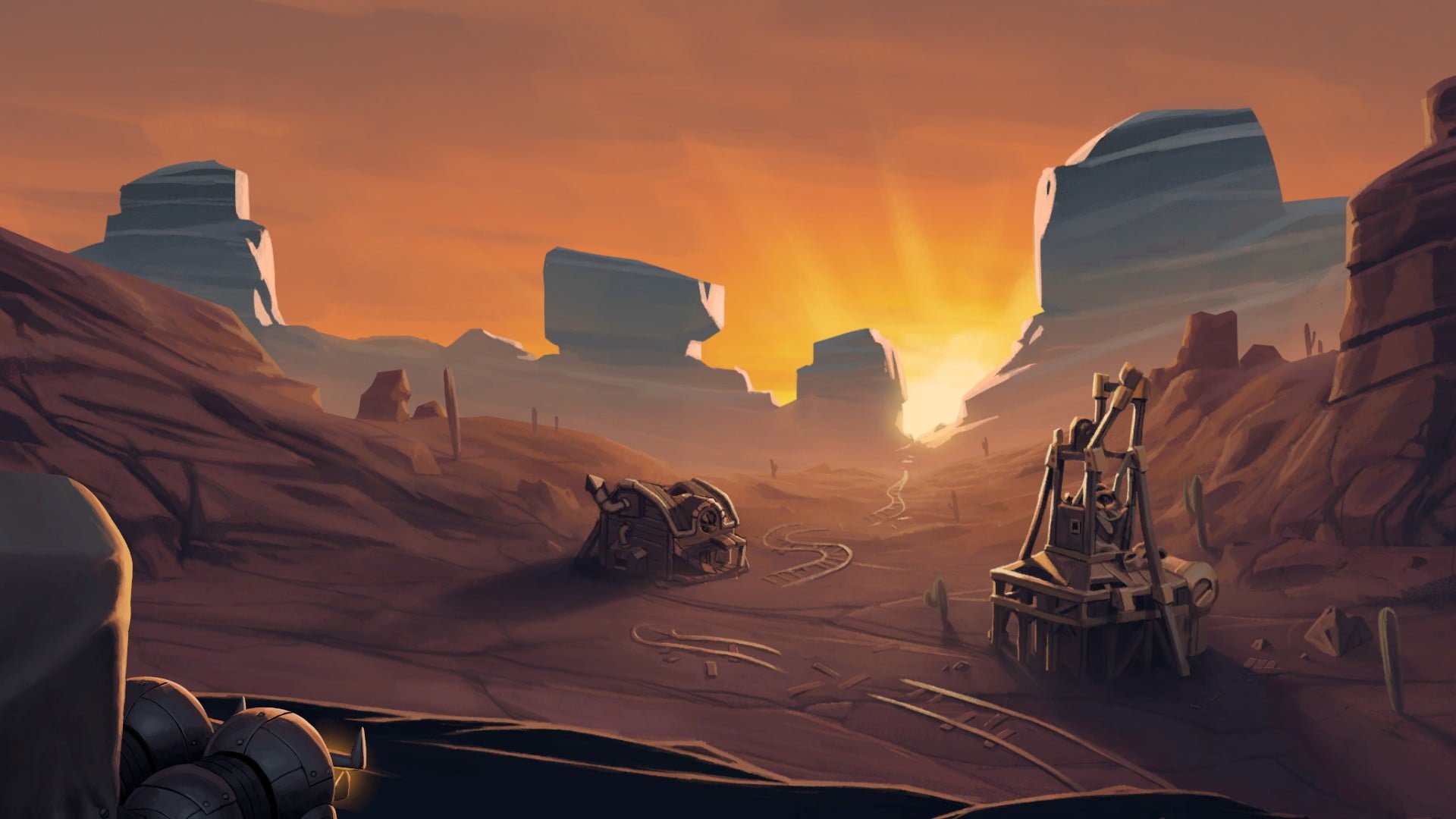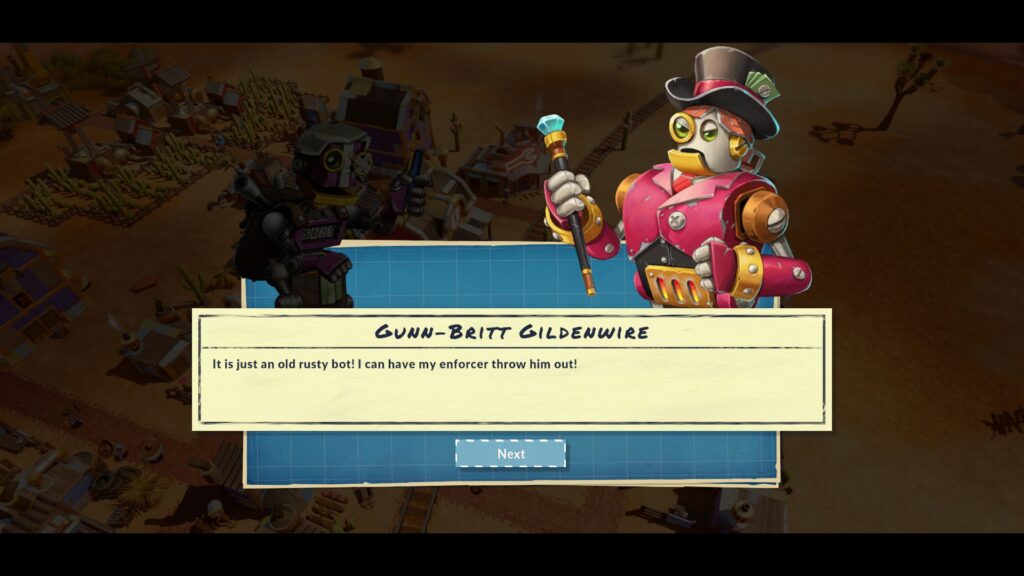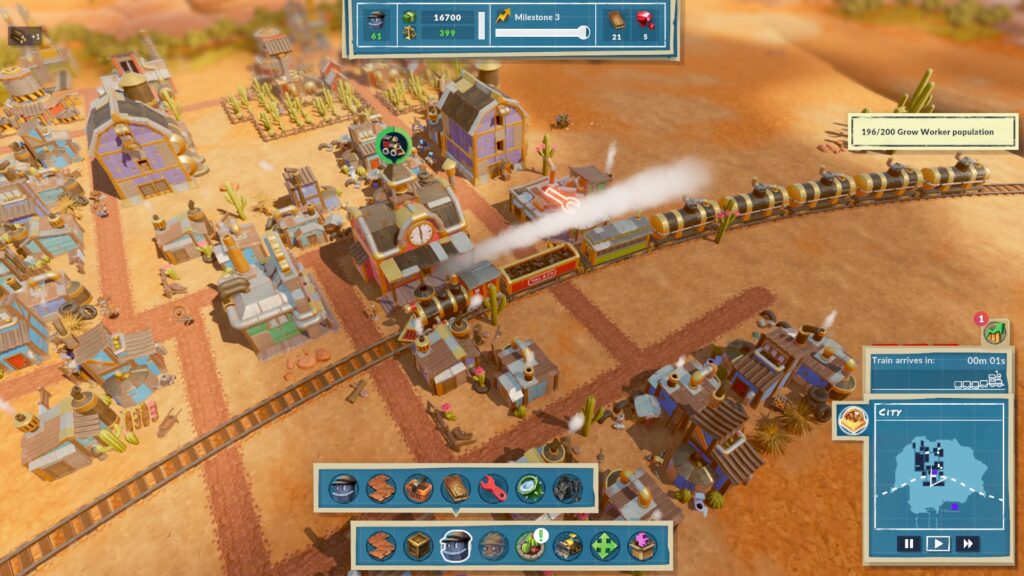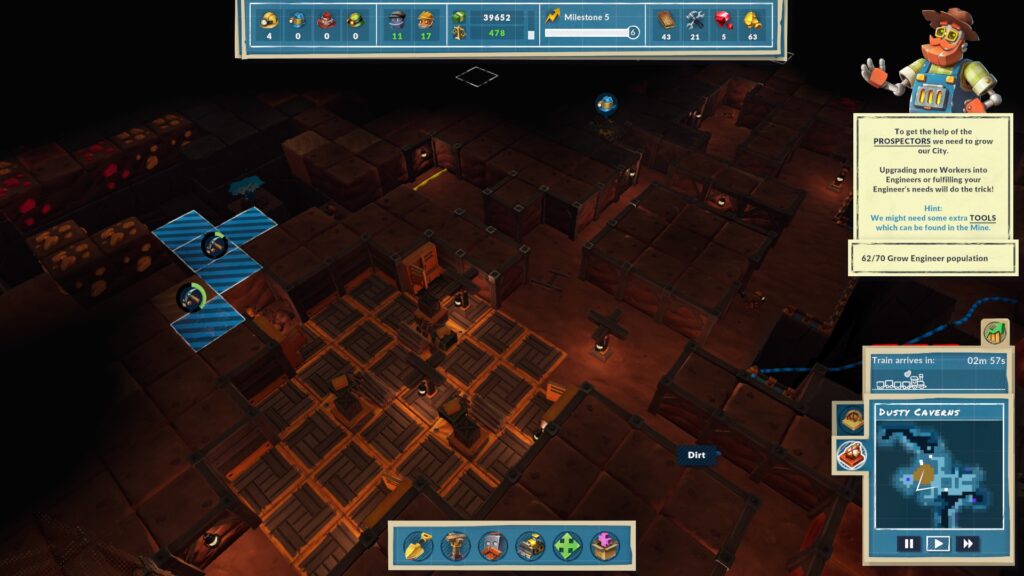The SteamWorld franchise is now approaching its 14th year, after the original release of SteamWorld Tower Defense on Nintendo DSi in 2010. SteamWorld Dig followed in 2013, and now a decade later we have SteamWorld Build; the first fully-3D SteamWorld game. SteamWorld is basically what if the whole world was Westworld (1973); an entire planet populated by nothing but steam-powered robots living in their own steampunk version of the Wild West. Games within the Dig series have previously been more akin to Metroidvanias and platformers. SteamWorld Build on the other hand is an amalgam of city-management and dungeon exploring.
There is a story holding the gameplay together, although it’s deliberately rather minimal and is just there in order to provide you with additional objectives. Your overarching objective is to recover the various pieces of ancient technology buried deep underground in order to reassemble a rocket capable of taking you into outer space. To do this though requires you to now only construct your own frontier town, but also outfit the mine with all the assorted workers and technology you’ll need in order to extract and excavate all the necessary material.
The first order of business is to construct the town. You’re given a variety of starting locations, and a bit of starting capital to get the settlement started. From your beginning dilapidated train station, the expansion mirrors that of an Old West boomtown; construct housing, lumber yards, farms and so on. Of course, these being steam robots there are also somewhat more esoteric needs, such as the repair shop to keep workers in good order, or the cattle farm that somehow breeds robotic cattle. Workers are needed to do most of the basic city tasks, but more advanced jobs require Engineers, which are upgraded Workers and so on.
Each class of robot has different needs, from appropriate food to recreational activities, which will get more and more complex as you unlock higher and more specialized tiers. Once your city is sufficiently populated and more or less self-sustaining, it’s time to open up the mine. Here you transition to a completely separate view underground, with the gameplay morphing into something more similar to Dungeon Keeper 2, or most appropriately Lego Rock Raiders. Indeed, the different requirements needed to mine harder formations of rock gave me strong Rock Raider vibes, a game which few people seem to remember these days.
The mine is a vast source of resources, each of which needs different mining robots to gather them. Only mechanics can build the specialized machinery needed to automatically gather from a scrap vein for example, or are able to install a water pump (needed for bringing purified water to the city through the use of a water purifier back on the surface). A lot of this can eventually be automated, allowing the city to serve as its own well-oiled machine. You can only have a maximum of 50 of most resources at any time, meaning you’ll be wanting to trade any surplus using the train station.
Every five minutes, a new steam locomotive rolls through town, allowing an opportunity to trade goods with the rest of the planet, either getting money or different resources in return. So if you’re running low on tools or lumber, you can always set up a trade to get some more so long as you have an alternative resource to sell. Likewise the train station allows you to purchase various upgrades which can then be permanently assigned to buildings, such as faster resource construction rate, higher tax revenues and so on.
Eventually, you discover the mines are not as abandoned as you were initially led to believe, and you’ll need to employ a security force in order to keep the miners and your constructions safe from attack. Likewise you’ll also have access to a variety of traps and turrets, giving you more options for defending the frontier. Although this may sound complicated, the learning curve is nice and gentle and overall unless playing on hard difficulty, the entire experience is predominantly easy-going and relaxing. It’s not particularly long either, with the entire story dusted off in under 10 hours.
Graphically the game looks excellent, certainly on par with similar isometric management games like Two Point Hospital. The Wild West merged with steampunk robotic aesthetic is consistently charming and funny, and if you zoom in and take a look at the individual robots scurrying about, all are animated delightfully whimsically. There’s also a not too overpowering tilt-shift effect, which gives things off in the distance an appropriate blur. The music is also nice, although there’s not a whole lot of it, being the sort of twanging guitar which would sound appropriate in the TV series Firefly.
Although some may gripe at SteamWorld Build’s lack of complexity and gentle difficulty, I honestly valued the game for not wasting my time and instead giving me a satisfying, well paced experience which didn’t outstay its welcome. While the lack of different overall objectives is going to hamper long-term enjoyment unless additional pieces of DLC add in more options, SteamWorld Build is still a lovely merger of streamlined city-builder and dungeon delver.









